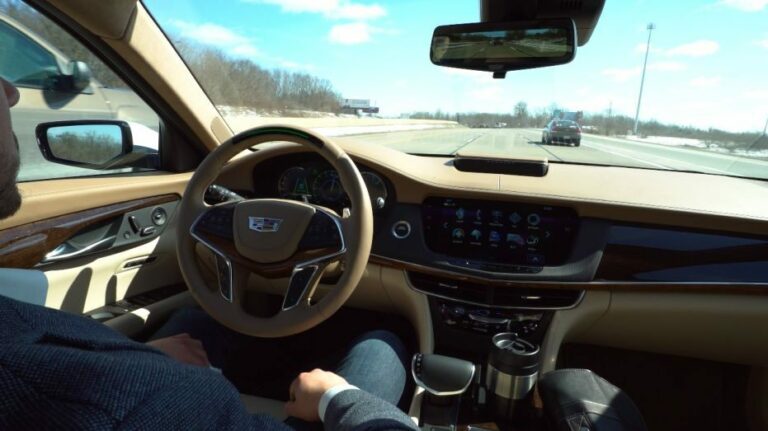Two tests by AAA during the past two years show that partially automated driving systems don’t always function properly, so the auto club is recommending that car companies limit their use.
Researchers with AAA recently tested systems from five manufacturers over a distance of 4,000 miles (6,400 kilometers), and said they encountered problems every eight miles (13 kilometers).
Most of the issues involved systems designed to keep vehicles in their lane, but the tests discovered that many had trouble spotting simulated broken-down vehicles in their path. About two-thirds of the time the test vehicles hit the broken-down car, at an average speed of 25 mph (40 kph), according to the study.
It was AAA’s second round of tests on the systems. Researchers said little had changed from a test of four other vehicles in 2018, prompting the recommendation that automakers stop including the technology on more models.
“AAA has repeatedly found that active driving assistance systems do not perform consistently, especially in real-world scenarios,” said Greg Brannon, AAA’s director of automotive engineering. “Automakers need to work toward more dependable technology including improving lane keeping assistance.”
Also the systems, which combine control of acceleration, braking and steering, often quit working with little notice to drivers, AAA found. That could cause a dangerous situation if the driver isn’t fully engaged and has to make an emergency decision.
AAA tested five vehicles at several research centers, with drivers and instruments monitoring their performance. Included this year were a 2019 BMW X7 SUV, a 2019 Cadillac CT6 sedan, a 2019 Ford Edge SUV, a 2020 Kia Telluride SUV and a 2020 Subaru Outback SUV. Their systems have names like Kia’s “Highway Driving Assist,” Subaru’s “EyeSight,” Ford’s “Co-Pilot 360,” Cadillac’s “Super Cruise,” and BMW’s “Active Driving Assistant Professional.”
The results were similar to those found in 2018 testing by AAA of four other vehicles including a 2017 Tesla Model S with the company’s “Autopilot” system.
BMW, General Motors and Subaru issued statements saying their systems aid drivers and are not meant to be fully autonomous. Messages were left seeking comment from Ford and Kia.
Subaru said its system “is designed to assist the driver, not replace the driver, when confronting hazards,” while GM said it designed the Super Cruise system so it makes sure the driver stays engaged.
“Super Cruise undergoes rigorous testing and validation, and we continue to remain confident in the system,” GM’s statement said.
BMW said it appears the X7’s system performed as designed in AAA’s testing. “BMW requires that the driver remain fully at attention in order to intervene in the case of an emergency situation (such as a car stopped in the lane as simulated in the AAA study),” BMW said.
AAA said most owners manuals explain that the systems have trouble spotting stationary objects.
The most recent tests show that the systems aren’t improving much, even as automakers move them into more mainstream models. Brannon said that can be a problem.
(AP)










